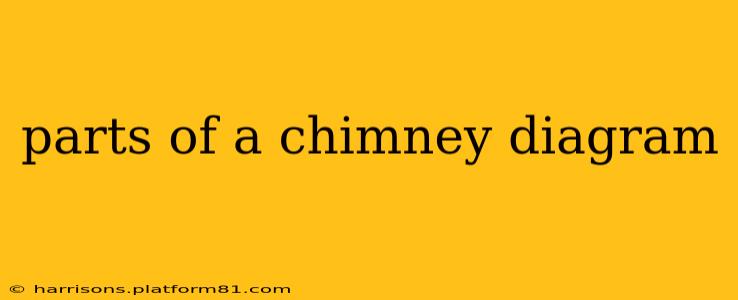Understanding the Anatomy of a Chimney: A Comprehensive Diagram and Guide
A chimney, seemingly simple in its exterior, is a complex structure with multiple crucial components working together to safely vent combustion gases from your fireplace, stove, or furnace. Understanding these parts is vital for proper maintenance, ensuring efficient operation, and preventing potential hazards. This detailed guide will break down the key components of a chimney, illustrated conceptually through a described diagram.
Conceptual Diagram Breakdown (Imagine a vertical drawing):
-
Crown: At the very top, the crown is the cap that protects the chimney from the elements. It's typically made of concrete or metal and is crucial for preventing water damage and ensuring the longevity of the structure.
-
Chimney Pot (Optional): Often placed atop the crown, a chimney pot is a decorative or functional element. Some increase draft, while others are purely aesthetic.
-
Flue Liner: Inside the chimney, this is the vital inner lining. It’s typically made of clay tile, stainless steel, or other durable, heat-resistant materials. The flue liner provides a smooth, gas-tight passage for smoke and combustion byproducts, preventing leaks and protecting the chimney structure.
-
Chimney Stack (or Chimney Shaft): This is the visible, vertical part of the chimney above the roofline. Its height and construction are critical for providing adequate draft.
-
Chase (Sometimes Called a Chimney Breast): This is the section of the chimney located within the structure of your home. It's essentially the part of the chimney that passes through the walls and roof.
-
Throat: Located at the top of the firebox, the throat is the transition point between the fireplace and the chimney flue. This area is often fitted with a damper to control airflow.
-
Damper: A crucial component within the throat, the damper regulates the flow of air into the fireplace and up the chimney. Closing it when the fire is not in use prevents drafts and heat loss.
-
Smoke Shelf: Just above the fireplace opening, this small ledge helps to prevent downdrafts and ensures a smoother flow of smoke up the chimney.
-
Firebox: The heart of the fireplace, this is where the fire burns.
-
Ash Pit (sometimes called the ash dump): Located beneath the firebox, this area collects ash and other debris.
Frequently Asked Questions (PAAs) and Answers:
What are the different types of chimney liners?
Chimney liners come in various materials, each with its advantages and disadvantages. Clay tile liners are traditional but can be fragile. Stainless steel liners are durable, corrosion-resistant, and often preferred for new installations or when replacing damaged liners. Other materials include cast iron and flexible liners, which are used for specific applications. The type of liner is crucial for safety and longevity and should be determined by a qualified chimney sweep.
How often should I have my chimney inspected?
Annual chimney inspections are strongly recommended, especially if you regularly use your fireplace or wood-burning stove. A professional inspection can identify potential problems like cracks, blockages, or creosote buildup before they lead to a fire hazard or other issues.
What is creosote, and why is it dangerous?
Creosote is a highly flammable byproduct of burning wood. It builds up inside the chimney flue over time and can easily ignite, causing a chimney fire. Regular cleaning is crucial to remove creosote buildup and minimize the risk of fire.
How does a chimney create draft?
The draft in a chimney is created by the difference in air pressure between the inside and outside of the chimney. Hot air rises, creating a low-pressure area inside the chimney, drawing in cooler air from the bottom to fuel the fire. The height of the chimney and its construction play a significant role in the strength of the draft.
What are the signs of a chimney problem?
Several signs can indicate a problem with your chimney. These include smoke entering your home, unusual sounds coming from the chimney, visible cracks or damage, poor draft, and the smell of smoke even when the fire is out. If you observe any of these signs, contact a professional chimney sweep immediately.
By understanding these components and addressing potential issues promptly, you can ensure your chimney functions safely and efficiently for years to come. Remember to always consult with a qualified chimney sweep for any concerns or repairs.
